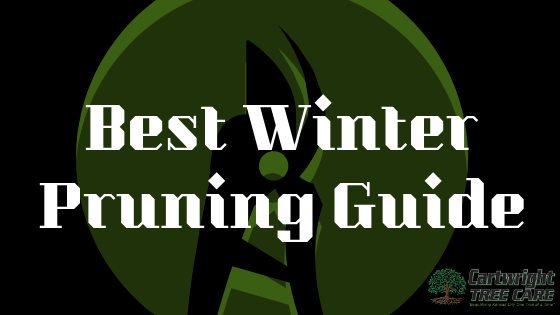
Winter Pruning Guide for You
Curious about the best method for pruning this season? Or, did you even know there was a best method? If you're new to learning about it, this may surprise you. But, you can make this process work for or against you. It'll work for you if you follow this guide. We worked happily to put it together for you.
Before we get started, though, a little haiku:
Go ahead and prune
pruning makes trees healthier
Again I say, Prune!
Okay, enough of that. First things first: you'll need secateurs. The first time I learned about this tool I thought, "I'll need what-a-whats?" It's just the formal name for pruning shears. The ones that are curved and used in the garden. Yep-those ones! Okay now that you have them on hand let's dive into this thing already so you can bounce outdoors and get started. We will also share specific pruning techniques including do's and do not's, and we will finally close by sharing a link to some specific plants to prune for winter!
Note, for the pruning we are mentioning here, it's best to not do it in the fall. This is because fungi are particularly active now. Tree wounds are slower to heal and are thus left open to infection. So, don’t do it now. Wait until the appointed time. Your trees will be more healthy, and you’ll be saved time and disappointment. As a general rule, not exact, you’re best to prune trees and shrubs that flower in mid to late summer during the winter season.
So, these chilly winter months are the best time to tend to deciduous trees - we have plenty of them in the midwest. Of particular importance is identifying the shape and sturdiness of the trees. You’ll do well to de-crowd the tree and to make sure the structure stands straight through your efforts.
Sap is less active in this season. So, cuts are less likely to ‘bleed,’ and the tree or shrub sustains less of a shock than being chopped when sap is in full flow. Wounds will callous over just as they would in nature, and this natural healing process should happen before growth begins again in spring.
Your Concise Step Guide
Step One
1: Pruning too far away from the bud makes it more likely that the wood beneath the incision and the bud will die. Therefore, the bud’s health is compromised. Further, die back opens the possibility that the whole stem can die if the bud doesn’t grow. However, you don’t want to prune too closely to the bud, either. The bud will be prone to damage, and this affects the whole system, compromising its chances of forming into a leaf or flower. It also makes for the possibility of die back on the stem further toward the base.
Step Two
2: Make sure you’re cutting at a proper angle. If you fail to do this, the stem can form a stub above the bud. Again, the danger is in die back. The stem may end up dying back at the bud or even beyond it.
Step Three
3: What you do want to do is cut immediately above the bud. Cut at an angle, allowing any water to fall away and thus preventing chances of rot.
Bonus Tip
Clean secateurs are the best as they will make it less likely for the spread of disease. Using sharp secateurs ensures there’s no snagging.
Now You Know
Your brain has the knowledge that it needs now. Go ahead and enact these instructions for your best winter pruning. Remember to use clean and sharp shears and to cut properly! Anytime you have questions, Cartwright Tree Care is happy to help. And, you can read about more tips, here. If you'd like more information about specific types of trees to prune in this season, check out this article. Thanks!

